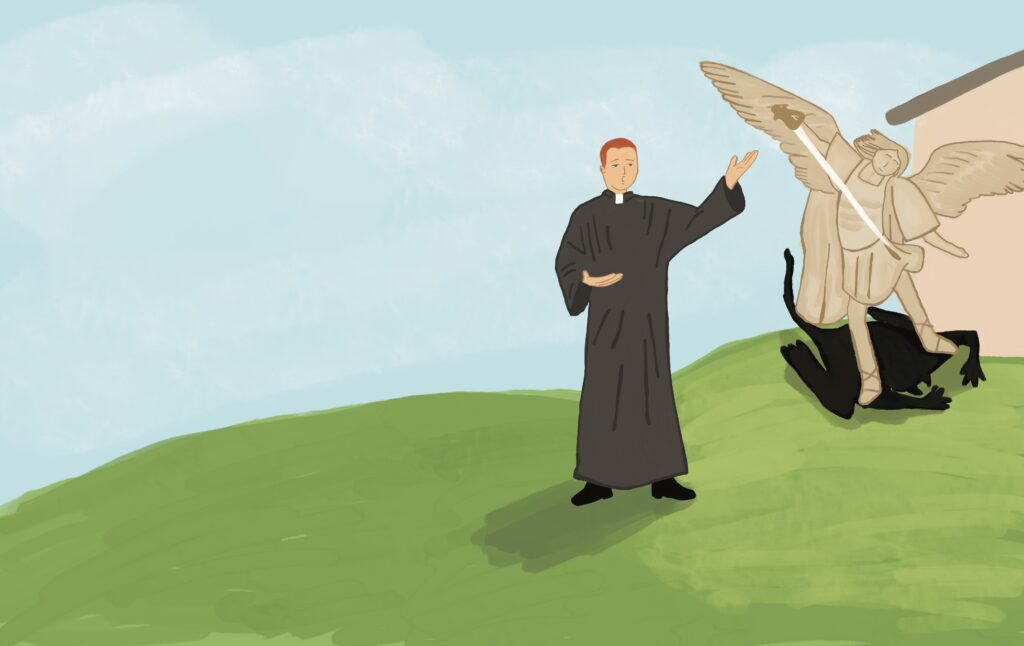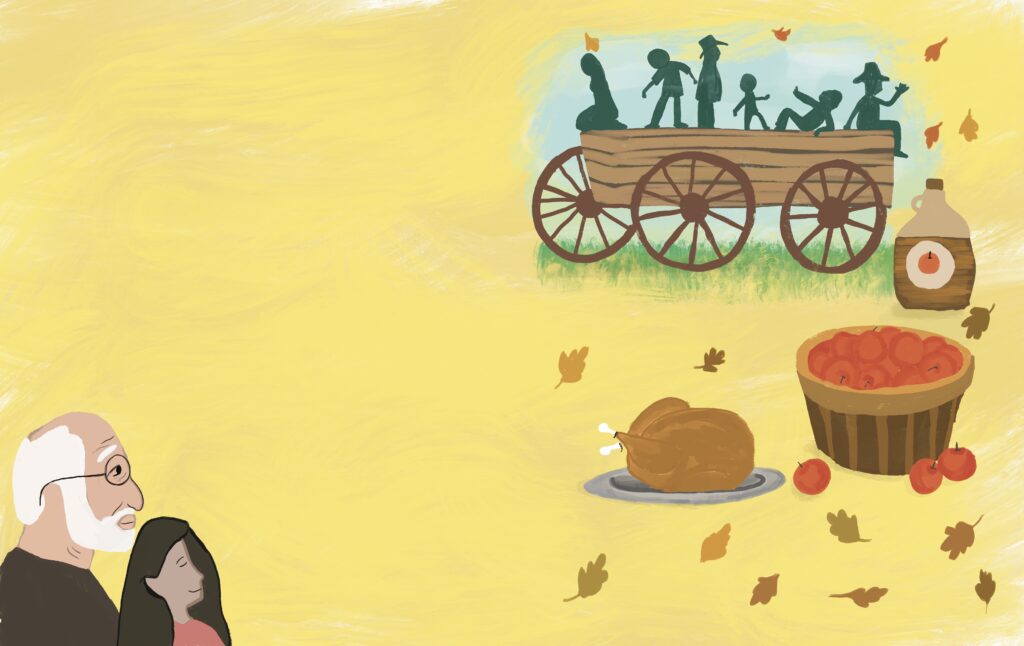Artwork by Steffi Andrat Faria
The Feast of St. Michael — Sept. 29 — is approaching and young Isabel’s grandfather is very sick. On top of that, her family is fighting and just don’t seem themselves. But a series of strange dreams lead her to a mysterious book that points her to a long-ago story and a deeper truth…and a very special Michaelmas celebration.
Purchase your copy today on Amazon, here!
Check out the book trailer here!
Michaelmas / The Feast of St. Michael & All Angels

The Feast of St. Michael & All Angels, also known as Michaelmas, was once not only a Holy Day of Obligation in the Catholic Church, but was a widely celebrated highlight of the year in many countries, replete with significance and traditions. Commemorating the Heavenly defeat of Satan and his army by the Archangel Michael and his army of angels loyal to God and the subsequent casting down of the devil, the holiday was celebrated as the traditional end of the harvest season, especially in the Western hemisphere.
Thus, as described in the story in this book, it was often an autumn-themed feast day, as well as a day when end-of-season accounts were settled and paid. Processions were held honoring the angelic saint and special foods included carrots, dug by women using three-pronged mattocks (representing St. Michael’s trident) in a triangle shape (representing his shield). Also traditional were blackberries (since Satan was said to have landed in prickly blackberry bushes and to have spit on them, turning them black; Michaelmas / The Feast of St. Michael & All Angels Michaelmas was the last day of the year when one could pick the berries before they turned sour, traditionally) and Michaelmas goose mentioned here, were eaten. In that regard, the holiday was somewhat similar to a later autumn feast day widely celebrated, Martinmas, or the feast of St. Martin of Tours on Nov. 11.

Michaelmas daisies, or asters, were one of the few flowers still blooming in some parts of the United Kingdom, and thus the flowers became associated with the feast day. Michaelmas (the name, like Christmas, derives from the words “Michael’s Mass”) is still associated with the name of the first academic term in some universities in Europe, as well as a seasonal term in the legal profession. As the story in this book seeks to emphasize, Michaelmas is not only still celebrated in some areas, but for many centuries has been one of the more vibrant and beloved celebrations on the Christian calendar, and presents an opportunity to help rebuild Christian and Catholic culture by reviving that celebration in homes and churches, in all its joy and richness.
